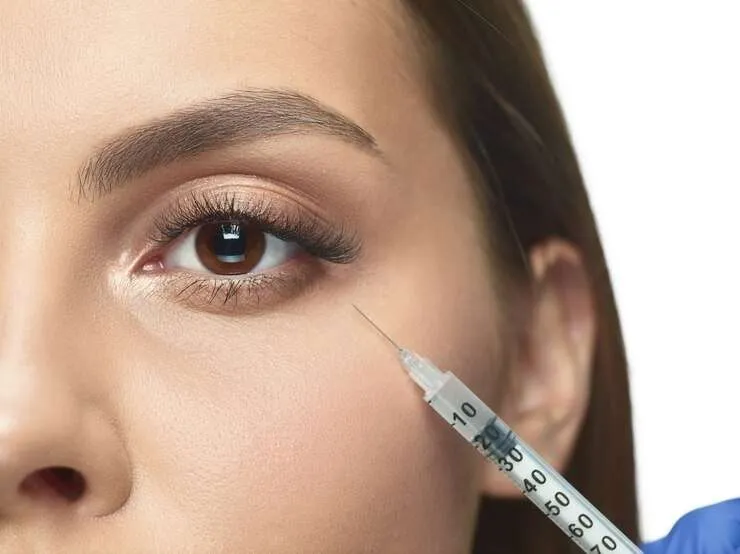When considering cosmetic enhancements, under eye fillers have gained immense popularity for addressing dark circles, hollows, and signs of aging. However, like any medical procedure, there are risks involved. While many assume that under eye fillers are entirely safe, complications can arise if not performed correctly. With advancements in dermal filler technology, Under Eye Fillers in Dubai have become more refined, but understanding potential risks is crucial before undergoing treatment.
Common Risks and Side Effects of Under Eye Fillers
Swelling and Bruising
One of the most common side effects of under eye fillers is temporary swelling and bruising. The delicate skin around the eyes is highly sensitive, making it prone to inflammation after injections. While mild swelling usually subsides within a few days, excessive bruising can occur if blood vessels are accidentally nicked during the procedure.
Lumps and Uneven Texture
Improper injection techniques or incorrect filler placement can lead to lumps or an uneven texture under the eyes. Hyaluronic acid-based fillers are moldable, but if not massaged properly, they may settle in clumps, creating an unnatural appearance. In some cases, additional treatments may be needed to dissolve or redistribute the filler.
Tyndall Effect (Blue Tint Under Eyes)
The Tyndall effect occurs when fillers are injected too superficially, causing a bluish tint under the eyes. This happens because light reflects off the filler material beneath the thin skin, making the area appear discolored. Choosing an experienced injector who understands the correct depth of placement can prevent this issue.
Allergic Reactions
Although rare, allergic reactions to filler ingredients (such as hyaluronic acid or lidocaine) can occur. Symptoms may include redness, itching, or severe swelling. A patch test before treatment can help identify potential allergies.
Migration of Filler
Under eye fillers can sometimes migrate from the injection site, leading to puffiness or bulges in unwanted areas. This is more likely to happen with low-viscosity fillers or if excessive amounts are used. A skilled practitioner will use the right product and technique to minimize this risk.
Infection
Any injection-based treatment carries a small risk of infection. Poor sterilization techniques or unhygienic practices can introduce bacteria, leading to swelling, pain, or even abscess formation. Choosing a reputable clinic with strict hygiene protocols is essential.
Vascular Complications (Blindness or Skin Necrosis)
One of the most severe (yet rare) risks is accidental injection into a blood vessel, which can block blood flow. This may lead to skin necrosis (tissue death) or, in extreme cases, blindness due to retinal artery occlusion. Only highly trained professionals should perform under eye filler injections to avoid such catastrophic outcomes.
How to Minimize Risks with Under Eye Fillers
Choose an Experienced Injector – A qualified dermatologist or cosmetic surgeon with expertise in facial anatomy reduces the risk of complications.
Opt for Hyaluronic Acid Fillers – These are reversible with hyaluronidase, providing a safety net if results are unsatisfactory.
Follow Aftercare Instructions – Avoid rubbing the treated area, excessive sun exposure, or strenuous exercise for 24-48 hours.
Start with a Conservative Amount – Overfilling can lead to unnatural results; a gradual approach ensures a more natural look.
When to Avoid Under Eye Fillers
If you have active skin infections or inflammation near the treatment area.
If you are pregnant or breastfeeding (safety data is limited).
If you have a bleeding disorder or are on blood thinners (increased bruising risk).
Alternatives to Under Eye Fillers
If fillers seem too risky, consider:
- PRP (Platelet-Rich Plasma) Therapy – Uses your own blood to stimulate collagen.
- Laser Treatments – Improves skin texture and reduces pigmentation.
- Topical Creams – Retinoids and vitamin C can help with mild hollowing.
FAQs
.How long do under eye fillers last?
Most hyaluronic acid fillers last 6-12 months, depending on metabolism and product type.
Can under eye fillers be dissolved?
Yes, hyaluronidase can dissolve hyaluronic acid fillers if needed.
Are under eye fillers painful?
A numbing cream or local anesthesia is used to minimize discomfort.
Conclusion
While Under Eye Fillers in Dubai can provide stunning rejuvenation results, they are not without risks. Choosing a skilled practitioner, understanding potential complications, and following proper aftercare can help ensure a safe and satisfying outcome. Always consult a qualified specialist to discuss your concerns and determine if under eye fillers are the right choice for you.
